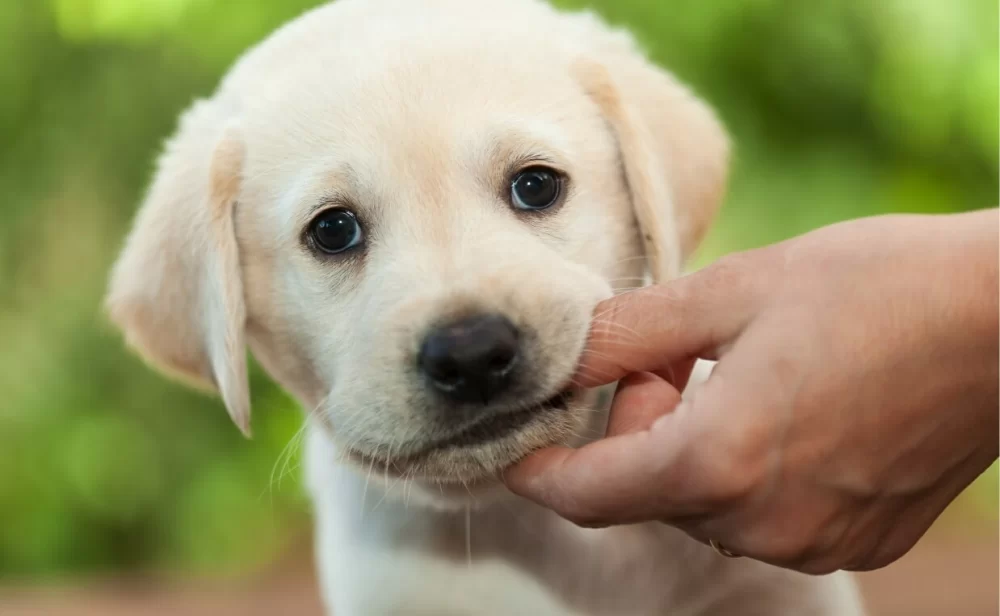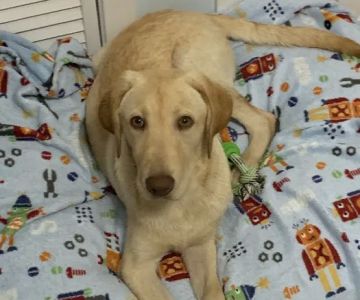Why Does My Puppy Bite?
If you're a new puppy owner, one of the most common challenges you'll face is dealing with biting behavior. It's normal for puppies to nip and chew as they explore the world with their mouths, but this can quickly become a frustrating habit. Understanding why puppies bite is key to addressing the problem effectively.
Puppies, much like babies, use their mouths to interact with their environment. In the wild, biting is a way for young dogs to communicate, explore, and learn. However, in a home environment, biting can become problematic if not properly redirected.
One of the primary reasons puppies bite is teething. Just like human babies, puppies go through a teething phase where their gums are sore, and they seek relief by chewing on objects, including your hands, furniture, and clothing. Additionally, puppies may bite as part of their play behavior, as they learn to interact with other animals or humans.
When Does Puppy Biting Become a Problem?
As cute as a little puppy’s nips may seem in the beginning, it can become a serious problem if not addressed early on. Puppy biting can lead to hurtful consequences if the dog doesn’t learn to control their impulses. Some dogs may become more aggressive as they grow older, and if biting isn’t corrected, this behavior can extend into adulthood.
It’s also important to consider the safety of others, especially children and elderly family members. While a puppy may not intend to hurt, their bites can lead to accidental injuries, and this could strain relationships with family and friends. Therefore, it's crucial to stop biting behavior before it becomes ingrained.
Step-by-Step Guide on How to Train Your Puppy Not to Bite
Now that we understand why puppies bite, it’s time to tackle the most important question: how do we train a puppy not to bite? With patience, consistency, and positive reinforcement, you can stop the biting habit and replace it with better behavior.
1. Redirect the Biting Behavior
The first step in training your puppy not to bite is to redirect the behavior. When your puppy starts nipping at your fingers or hands, gently remove your hand and offer them a chew toy instead. This teaches the puppy that chewing on the toy is acceptable, but biting humans is not. It’s important to use a variety of chew toys to keep them engaged and distracted from biting your hands.
2. Use Positive Reinforcement
Positive reinforcement is one of the most effective methods to encourage good behavior in puppies. When your puppy plays nicely without biting, immediately praise them and offer a treat. This helps them understand that calm and gentle behavior is rewarded. Over time, your puppy will learn that keeping their mouth to themselves results in positive outcomes.
3. Establish a Firm "No Bite" Command
Consistency is key when it comes to training your puppy. One effective method is to use a firm "No Bite" command every time your puppy starts to nip. Be consistent with your tone and body language, so your puppy can clearly understand what behavior is not acceptable. Pair this command with a brief time-out if necessary to reinforce that biting results in a loss of attention and playtime.
4. Socialize Your Puppy with Other Dogs
Socialization is an essential part of puppy training. By allowing your puppy to interact with other dogs, they can learn appropriate play behavior and how to communicate without using their teeth aggressively. Controlled playdates with other puppies or adult dogs can teach your pup the boundaries of appropriate play.
5. Keep Your Hands and Feet Out of Reach
A common mistake many new puppy owners make is allowing their puppies to get too close to their hands or feet while they’re still learning not to bite. Avoid using your hands as toys, and refrain from waving them near your puppy’s face, as this can encourage biting behavior. Instead, direct their focus to appropriate toys and rewards.
6. Be Patient and Consistent
Training a puppy takes time, and it’s important to stay patient throughout the process. Puppies don’t learn immediately, and they may need several repetitions to fully grasp what is expected of them. It’s also important to stay consistent with your training techniques. Mixed signals or inconsistent responses can confuse your puppy and slow down their progress.
Common Mistakes to Avoid While Training Your Puppy
While it’s essential to know what to do, it’s equally important to avoid common mistakes that could hinder your puppy’s training process. Here are a few pitfalls to watch out for:
- Using physical punishment: Hitting or harshly scolding a puppy for biting can lead to fear and aggression. It’s important to use positive reinforcement rather than negative punishment to guide your puppy toward good behavior.
- Inconsistent training: It’s easy to get frustrated with a puppy that continues to bite, but inconsistency can slow down their learning process. Make sure everyone in your household is using the same techniques and commands.
- Ignoring signs of teething: If your puppy is teething, they may be more likely to chew on things. Make sure to provide plenty of chew toys to help them through this stage.
Dealing with Biting in Older Puppies
While younger puppies are more easily redirected, older puppies may require more patience and a firmer approach. If you’ve neglected training during the early months, don’t worry—it's never too late to start. Older puppies may respond well to training with clear boundaries and rewards for good behavior. It’s also a good idea to consult a professional dog trainer if biting becomes more aggressive or persistent.
Training your puppy not to bite is not an overnight process, but with time, dedication, and the right techniques, you can foster a healthy, positive relationship with your furry friend. Remember, patience is key, and every step forward is a victory for both you and your puppy!












